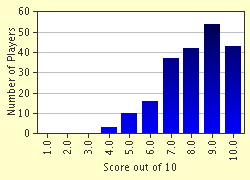Quiz Answer Key and Fun Facts
1. What is the lowest note written for the B flat clarinet?
2. What creates the sound in a clarinet?
3. Which of the following things is part of the clarinet?
4. How many octaves can the clarinet play?
5. Who invented the modern clarinet?
6. Who was the first composer to introduce the clarinet to an orchestra?
7. The clarinet is part of which family?
8. The clarinet is a part of the woodwind family. Which of these instruments is not?
9. What is a reed?
10. What is the mouthpiece used for?
Source: Author
Tarneya
This quiz was reviewed by FunTrivia editor
agony before going online.
Any errors found in FunTrivia content are routinely corrected through our feedback system.

